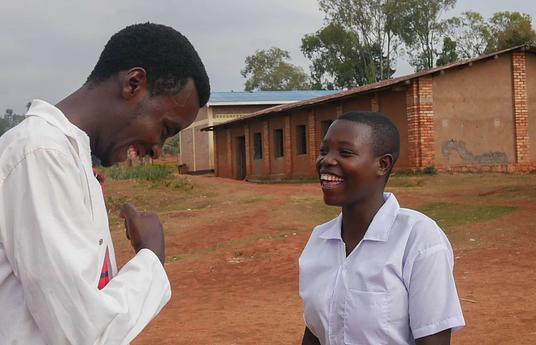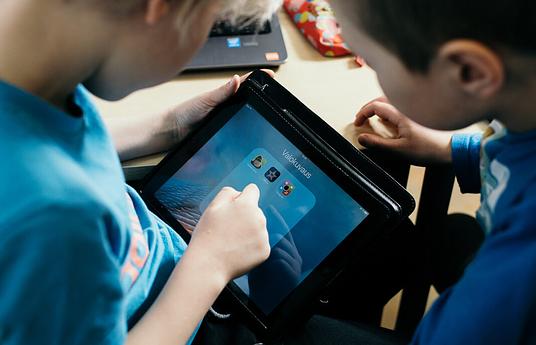In this collaborative article co-authored by HundrED Head of Growth Danny Gilliland and Abi Nokes Chief Executive Officer at inHive, explore networks. Danny and Abi are on a life-long journey to learn and connect. They spend their professional lives geeking out about the part networks can play in driving positive change and equity in education systems, and the back-end support they need for this to be realised. In this article, they share 10 recommendations on how to build and support networks.
Networks have been experiencing something of a renaissance over the last 15 or so months. As we all hunkered down and looked around at what we could rely on in this new and emerging world - two things seemed quite clear:
- To have a systemic or scalable change in a post-pandemic world, you cannot go it alone.
- There is very little we can rely on with funding cuts and strategy reimaginings aplenty, but our relationships - whether that be with individuals or between organizations - are here to stay.
This is not a love letter to networks, we are assuming that if you’re reading this you already have an interest in them and how a network could help catalyze your impact. We want to share some of our lessons in how to build effective and sustainable networks that can amplify the change you wish to see.
Earlier this year we were both part of a small cohort on a Networks Learning Journey together (hosted by inHive), in collaboration with wonderful minds from Teach For All, Mastercard Foundation, Siemens Stiftung, Jacobs Foundation, African Leadership Academy, Intrinsic Labs, Giving Tuesday and a few others, who came together to explore the role of networks in driving social justice - this was a meeting of minds from funders, academics and practitioners, like us.
Here we share some of the key lessons that emerged, in the hope that they might spark some ideas for you:
1. Get clear on your ‘why’
An engaged network should never be an end goal. You would never design a programme for the sake of it, and you don’t want to run a programme for longer than it takes to achieve your goal. It’s the same with networks - they can be incredibly powerful tools for organising for change, but they need a purpose. This can be a very big and long-term one (such as Teach For All’s - In 2040, communities in every part of the world are enabling all their children to have the education, support and opportunity to shape a better future for themselves and all of us. These communities are inspiring and informing a worldwide movement to achieve this everywhere.), or it can be shorter term and specific - such as Pakistan Youth Change Advocate’s goal to lobby the regional government to increase spending on girls education.
2. Clarify your ‘who’
In the case of inHive’s partners, this is usually quite straightforward; we specialise in alumni networks. We use ‘alumni’ in the broadest sense - both to describe those who have been to school together, but also those who have been through a programme together - this could be a leadership experience, a scholarship, or an accelerator programme for example. For other networks, this is a more complex question and there are benefits to being open and inclusive, as well as closed and perhaps more elite. What sort of criteria you need depends on the goal. African Leadership Academy have got different levels of network membership - the inner circle are those who have had an intense, long term and focused experience with ALA, and the very outer layer are those who self-define as network affiliates - those who feel a bond with ALA and support its vision. The network leaders design activities and strategies for the inner circle, but the outer circle are informed and invited to events where relevant and appropriate. On the opposite end of the spectrum, GivingTuesday’s model is that anyone can be a part of the network if you identify with the vision around unleashing the global power of generosity. The vision itself is intentionally expansive and inclusive so as to appeal and be relevant to almost everyone, and the value of being part of it is the ability to act under a broad, recognised and inclusive umbrella.
3. Guide people on how to engage
One of the most common downfalls in networks is members wanting to be involved but not knowing how - either because they don’t know what is expected of them, or because they don’t feel ‘permission’ to take action. At HundrED, we have welcome guides for all our community members that clearly outline what is expected of them, ways they can engage, and how they can contribute. This allows our more excited members to contribute significantly by guiding their energy while encouraging participation from those that are still feeling out the community. These resources range from how to communicate on public and private channels to how to host your own HundrED event, and they are all easy to access on our site or channels. This is also critical to ensure that our one community manager isn’t overwhelmed with small requests coming from our almost 1,500 community members. We update these documents and re-share them every year to reflect what we’ve learned and improve engagement.
4. Bank some early ‘wins’
Often a network’s goals are long-term and complex. It can be so difficult to maintain a high level of energy over time if you don’t have early wins. The purpose of this is twofold: 1) celebrations are a powerful mechanism to build a shared identity and collectivism 2) they can be a way to highlight the ownership that members have taken. In the Networks Learning Journey, we heard from Reach for Change’s Social Entrepreneur Network in Ghana. Their long-term ambition was to change national legislation to better recognise and serve the needs of social entrepreneurs. This change took them four years, but the network stayed committed and engaged during this time by identifying the mini-milestones along the way - the meetings that needed to be had, the people that needed to lend their voice and support, the papers that needed to be drafted. Each of these was celebrated in its own way as a critical stepping stone.
5. Find and nurture your connectors
We cannot stress enough how pivotal these superstars are - whether you call them collaborators, ambassadors, enthusiasts or ‘nodes’ - these people are your stardust. They can truly activate a network, taking it from a centralised, expensive and resource-heavy endeavour to a community-owned and much more engaged collective. As one of the most progressive funders, Mastercard Foundation has built its alumni strategy around identifying a diverse range of young leaders to who drive the direction, reach out and engage their peers, and determine where funding goes. This is an initial but fundamental step to redistributing the power and activating a much wider group of leaders than they might otherwise have done.
6. You can’t tell enough stories
HundrED’s core mission is to help innovations spread globally by telling their stories. Stories from the community act are uplifting, motivating, and validating for community members. They promote both the members of the community and the community itself by validating it. Stories can also tend to breed more stories, as those who read them are impressed and want their story told as well. Stories are generally the most engaging content to release and bring a human element to the work that we do. They are also the most highly shared by community members to their communities, creating more interest and views on the amazing work our members do.
7. Create spaces for ideation
Working with many motivated people around the same mission, they can soon have as many and possibly better ideas on what to do within the community than whoever created it. To foster these ideas and provide opportunities for members to incorporate them into the community, create specific spaces or feedback loops to capture and adopt them. Hosting retreats for members is one way to do this, which is what Jacobs Foundation has done - creating open spaces for network members to come together to reflect, learn from each other and find opportunities for collaboration. These spaces are most effective when well designed and facilitated. Small Foundation and their partners at Converge have developed a network evaluation toolkit that provides suggested ways to manage reflection and learning.
8. Use the momentum
When people have been in a network long enough, they can start to develop their own reason for attending and ideas to continue to engage. It’s important to use this momentum to continue the engagement and growth of the network, as long as it’s not counter to the mission and values of the community. Intrinsic Labs focuses on exactly this and emphasies the importance of enabling network members to align their work with their purpose so that members and their commitment to the vision is the energy that fuels the network, rather than investing huge resources in driving engagement (and tracking of that engagement) where it doesn’t resonate. We recommend checking out their podcast!
9. Start shifting ownership
At a certain point in the size and/or complexity of a network, it becomes impractical and likely financially unfeasible to manage it centrally. When it starts to feel overwhelming to handle all the incoming requests while producing the regular activities, it is time to start tapping into the highly engaged members of the network in a structured way. Teach For All has done an amazing job of this with their alumni networks. After they have completed their time with Teach For All partners, alumni move to many different fields in all countries of the world. Teach For All kickstarts alumni networks in sectors ranging from politics to technology, but makes it very clear that the participants are responsible for taking the community and organizing it after the first few meetings. Many of these communities have been self-organizing for over 5 years since they were initially launched.
10. Foster and monitor growth
If all of the previous tips have been well implemented, the network should be relatively self-sufficient with little outside intervention. The organisation that started the network need only monitor the growth to ensure it continues and respond to any major issues or changes in highly engaged members. A great example of this is the Global Schools Forum: a network of non-state school actors (a network for networks). Having been founded and incubated as an ARK Venture, it is now spinning out as an independent network with its own governance, leadership and vision which incorporates and includes the members themselves in these roles.
We see these as ten possible steps and ideas to create and grow a network, but they are not all required and certainly not exhaustive. These are simply what we have learned from our journey this year from so many network experts. Our hope is that they can serve as a simple guide to spur ideas and actions to create more meaningful and equitable opportunities for human connection around the world.
We also recognise this is a relatively new practice for many, and further conversation might be helpful. There are some already existing spaces you can join:
- inHive hosts a network called Nexus (specifically for alumni network leaders) - it’s a sharing and learning space, as well as somewhere to collaborate with other networks. It’s free to participate, so please get in touch with Abi at abi@inhiveglobal.org
- For other networks, the inHive and HundrED teams would be happy to share their insights and point you in the direction of more resources. If we reach a critical mass of interest, we would also be happy to host a workshop as part of the HundrED Summit in November. This will be in response to demand, so get in touch if so!



